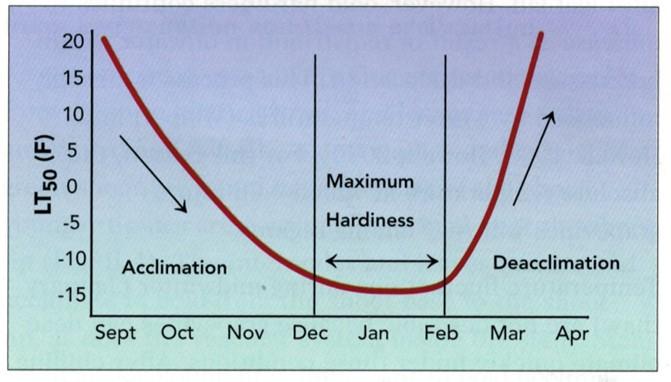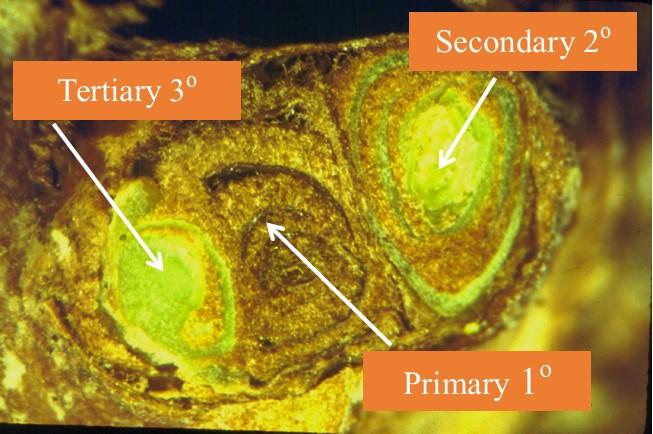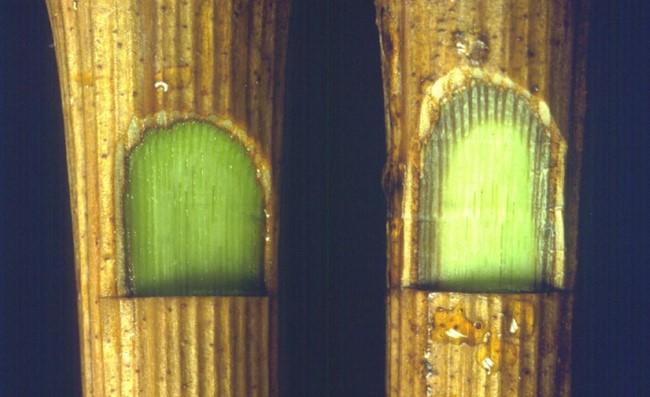Understanding Grapevine Bud Damage
Damage from low winter temperatures is arguably the greatest risk to sustainable profitable winegrape production in the eastern US. The majority of Maryland vineyards had not experienced a significant amount of low-temperature damage over the past decade or so, however, vineyards throughout Maryland have experienced damage over the past three winters. The following “TimelyVit” will give an overview of how vines attempt to prevent damage, the conditions which influence the level of damage, and types of damage. Please see the complement “TimelyVit” in the series on “Assessing Grapevine Bud Damage,” which discusses how to assess the damage and how to modify your pruning based on the assessment.
Preventing Damage
Buds acclimate and tolerate sub-freezing temperatures by two mechanisms:
|
1. |
Dehydration - movement of water to intercellular spaces |
|
2. |
Accumulation of sugars and protein complexes that bind water that serve as cryoprotectants. These cryoprotectants lower the freezing point of water and allow cell contents to “supercool” without forming damaging ice crystals. |
Conditions that influence damage
- In general, damage typically begins to occur when minimum temperature extremes of -5o F are experienced in mid-winter. The damage may vary based on:
- Variety/type; the following are in decreasing order of hardiness: (damaging temps.)
- American cvs. (< -15° F) > French Hybrids (< -10° F) > vinifera (< -5° F)
- American cvs. (< -15° F) > French Hybrids (< -10° F) > vinifera (< -5° F)
- Previous season’s cropping level: Higher crop = lower hardiness
- Previous season’s fall acclimation and hardening of canes
- Slow acclimation and hardening of canes = greater hardiness
- Slow acclimation and hardening of canes = greater hardiness
- Seasonal water table: If the roots of the vine are in the water, the hardiness will decrease.
- Trellis system: High cordon will tend to have less damage than VSP (buds are physically higher)
- Extreme temperature fluctuations from warm (50° F+) and then quickly to very cold (0°F) may cause vines to slightly deacclimate and therefore less hardy which may make them slightly more sensitive to low temperatures.
- Recently pruned vines may be more susceptible to damage than unpruned vines.
- When the low temperature occurs in relation to the stage of acclimation of the vines (See Figure 1 on page 2 from Zabadal et al., 2007.)
- Low-temperature tolerance increases as the vine hardens through the fall;
- Maximum hardiness is typically reached in mid-winter;
- Low-temperature tolerance decreases after rest is satisfied and vines deacclimate (become less cold tolerant) as they approach the end of winter. When the buds are swelling, damage can take place with temperature in the mid 20s°F.
- The actual temperatures are critical - Wind chill does not affect grapevines.
- Variety/type; the following are in decreasing order of hardiness: (damaging temps.)



